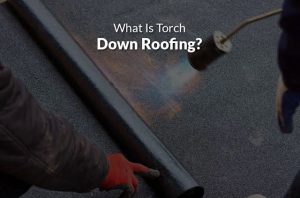torch roofing
Almost every roofer that has experience with torch down roofing has a story about a fire hazard they have witnessed. Because of this, insurance companies have added strong exclusions to policies that involve the use of open flames. First, a contractor will put down an insulation layer depending on the roof type. Then a vapor barrier is placed followed by overlay boards. A cap sheet is then rolled on top of the base sheet.
Compared to other flat roofing options, the life expectancy of a torch roofing system is relatively high. This is because the bitumen material it uses expands and contracts when the temperature changes, making it less prone to structural damage and cracks. This makes it a strong choice for people who are looking to minimize the number of times they will need to have their roof repaired. However, it is still important to carry out regular inspections and maintenance to ensure that any problems are repaired as soon as possible.

The downside of this is that working with a Torch Roofing can be dangerous and there are many articles on the internet about fires caused by roofing contractors using open flames on buildings. As a result, many insurance companies have made it an explicit condition of their policies that a torch roofing system cannot be used. They prefer more modern alternatives such as EPDM roofing systems and PVC roofing systems instead.
Can you explain the lifespan and durability of a torch roofing system?
Torch roofing systems are durable and withstand weather changes. Their membranes are made of modified bitumen, which is an asphalt compound that’s mixed with rubber or plastic. The layering of this material makes torch-down roofs resistant to tear and puncture damage. This type of roof is also highly flexible and responds well to both high and low temperatures.
When installing a torch down roofing system, a professional will first install an overlay board and then a thermofusible film and vapor barrier to enhance its moisture protection. Then, the contractor will install a base sheet and a cap sheet with a granule surface. A granule cap sheet will help protect the Barrie Roofing from extreme heat and UV rays, helping homeowners save money on their energy bills. If a roof has features that penetrate the roof, like vents or HVAC designs, a contractor will install a self-adhering modified bitumen membrane and metal flashing to ensure waterproofing around those areas. This will help extend the lifespan and durability of your roof.
The cap sheet is the second layer that a roofing contractor will install on your roof. It is rolled out over the base sheet and then heated with a torch to fuse the two together. For a three-layer system, the roofer will also apply a third granular cap sheet. This shingle is resistant to high temperatures and UV rays, which can cause other types of roofing materials to degrade. It is also a great choice for homes with a skylight because it will help to keep the interior of your home cool and save you on electricity bills.
However, torch applied roofing is a fire hazard and should not be used on your flat roof. In fact, almost every roofer that has worked with this type of roofing will have a horror story to share about how it caused serious injury or even a fire on their building or residence. The most common reason for this is that a contractor will use it because it is cheap and they are of the mind set that “cheap price gets the job”. There are more modern alternatives to a torch down rolled roofing system such as EPDM, PVC, and TPO, which are much safer and longer lasting than a torch down roof.
Name : Barrie Roofing & Repair Contractors
Address: 279 Yonge St, Barrie, ON, L4N 7T9 P.O Box#23013
Phone: 705-999-7628